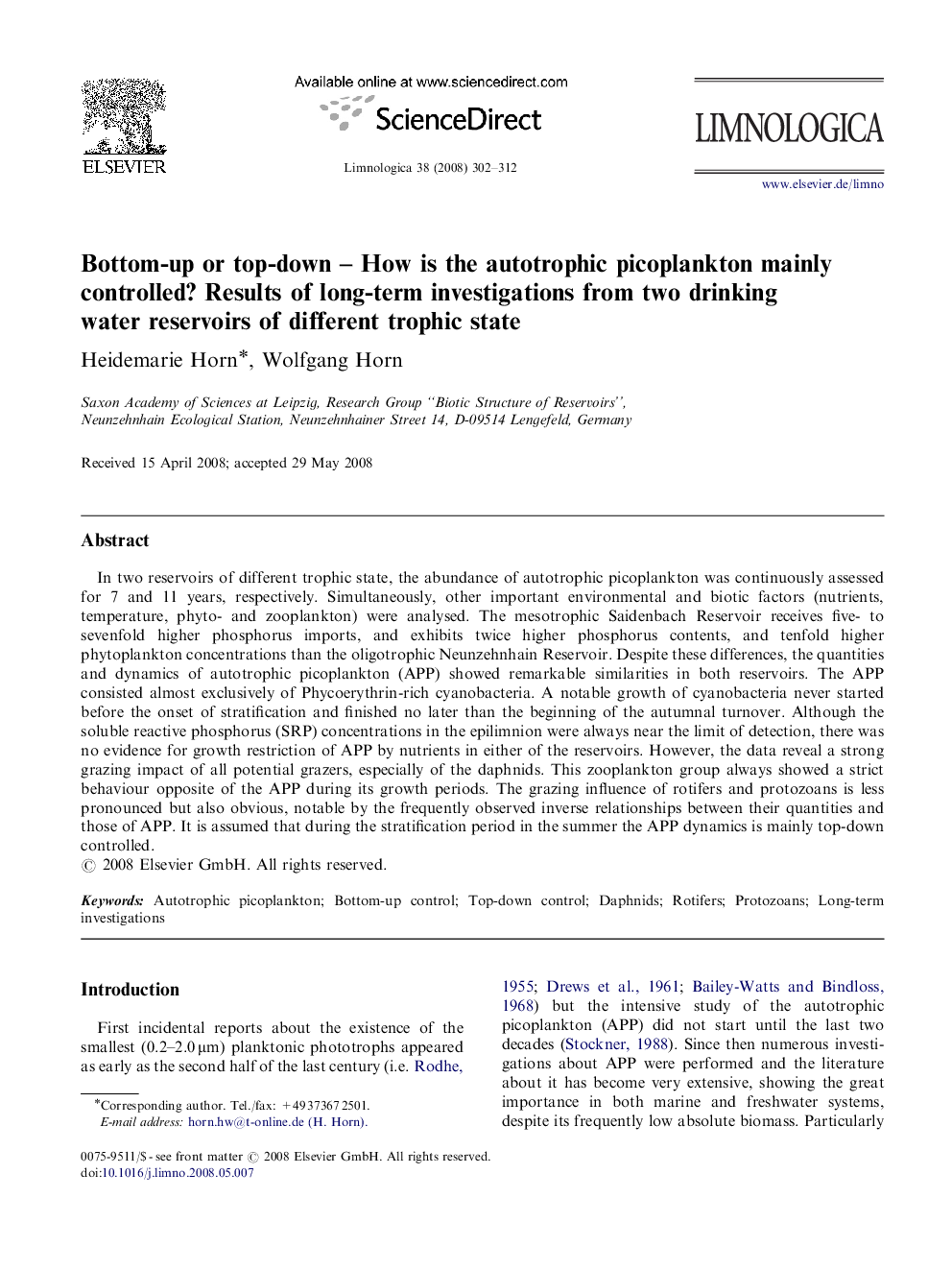| Article ID | Journal | Published Year | Pages | File Type |
|---|---|---|---|---|
| 4400688 | Limnologica - Ecology and Management of Inland Waters | 2008 | 11 Pages |
In two reservoirs of different trophic state, the abundance of autotrophic picoplankton was continuously assessed for 7 and 11 years, respectively. Simultaneously, other important environmental and biotic factors (nutrients, temperature, phyto- and zooplankton) were analysed. The mesotrophic Saidenbach Reservoir receives five- to sevenfold higher phosphorus imports, and exhibits twice higher phosphorus contents, and tenfold higher phytoplankton concentrations than the oligotrophic Neunzehnhain Reservoir. Despite these differences, the quantities and dynamics of autotrophic picoplankton (APP) showed remarkable similarities in both reservoirs. The APP consisted almost exclusively of Phycoerythrin-rich cyanobacteria. A notable growth of cyanobacteria never started before the onset of stratification and finished no later than the beginning of the autumnal turnover. Although the soluble reactive phosphorus (SRP) concentrations in the epilimnion were always near the limit of detection, there was no evidence for growth restriction of APP by nutrients in either of the reservoirs. However, the data reveal a strong grazing impact of all potential grazers, especially of the daphnids. This zooplankton group always showed a strict behaviour opposite of the APP during its growth periods. The grazing influence of rotifers and protozoans is less pronounced but also obvious, notable by the frequently observed inverse relationships between their quantities and those of APP. It is assumed that during the stratification period in the summer the APP dynamics is mainly top-down controlled.
